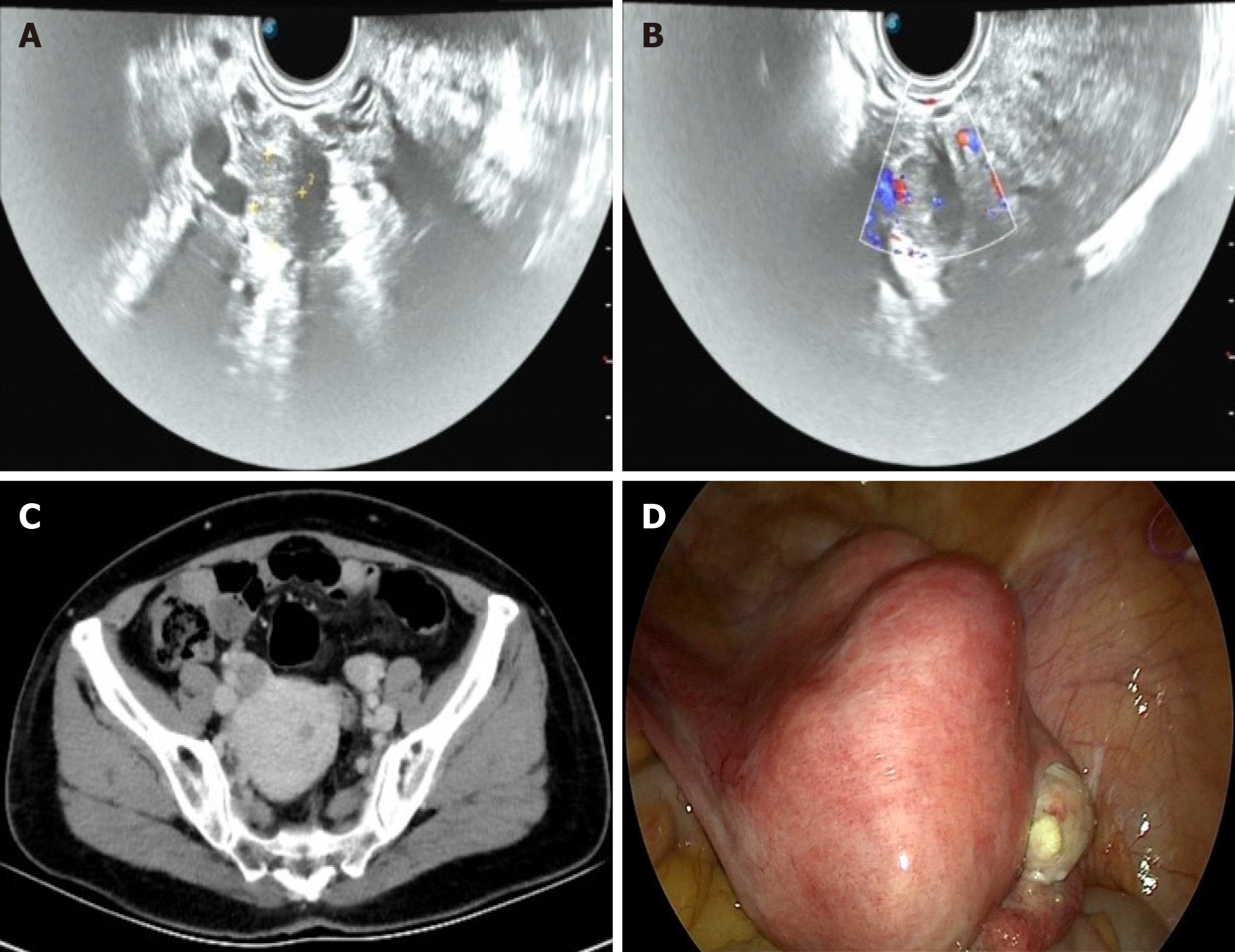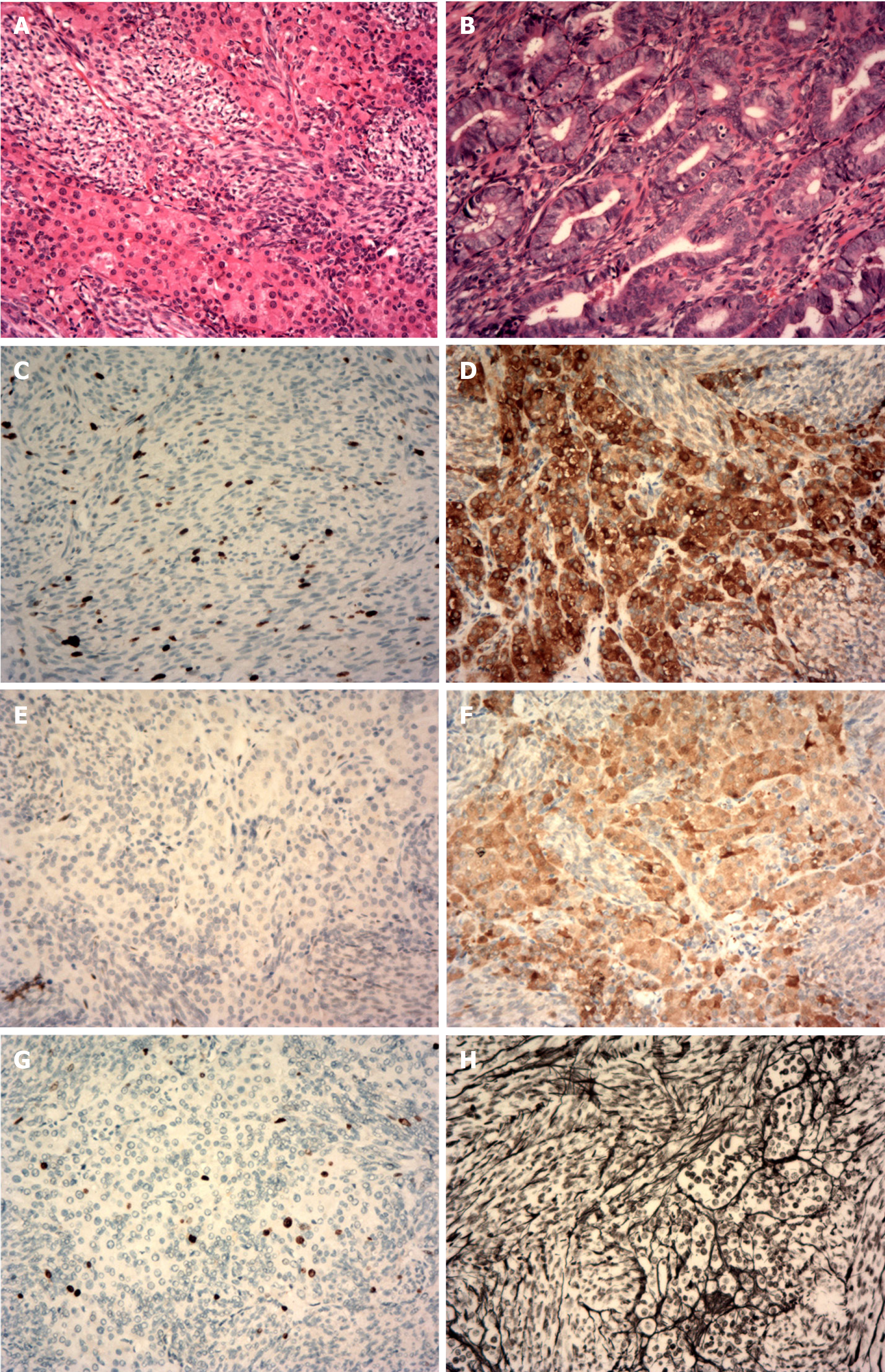Copyright
©The Author(s) 2022.
World J Clin Cases. Jan 7, 2022; 10(1): 275-282
Published online Jan 7, 2022. doi: 10.12998/wjcc.v10.i1.275
Published online Jan 7, 2022. doi: 10.12998/wjcc.v10.i1.275
Figure 1 Imaging findings of the patient before the fourth operation.
A: Transvaginal ultrasonography: The endometrium was thickened (approximately 2.0 cm in total). Several hypoechoic masses were observed in the uterine area. There was no obvious space-occupying lesion in bilateral adnexa; B: Hysteroscopy: the endometrium was extensively thickened, the texture was fragile; C, D: Pelvic MR: The endometrium was thickened (approximately 1.6 cm in total), and the signal in the right corner of the uterine cavity was not uniform.
Figure 2 Imaging findings of the patient before and during the fifth operation.
A, B: Transvaginal ultrasonography: A 1.6 cm × 1.2 cm × 1.2 cm mass with hypoechoic was seen in the right ovary, the boundary was clear. Blood-flow signals were detected with color Doppler flow imaging; C: Abdominal computed tomography: There was a low-density nodule with a size of approximately 1.5 cm × 1.0 cm in the right ovary, with clear borders; D: Laparoscopy: The uterus was obviously large and irregular, with multiple fibroids nodules. A yellow protruding lesion of approximately 1 cm was observed on the surface of the right ovary.
Figure 3 Histopathological and immunohistochemical staining findings.
A: The tumor cells of the right ovarian lesion were spindle-shaped and bundle-like with sheet-like arrangement, and the cells were densely arranged without obvious atypia. Eosinophilic cell nests with rich cytoplasm were visible in the focal area; B: The densely arranged endometrial glands were hyperplastic, and some glandular lumens were irregular; C: Cytokeratin (focal+); D: Inhibin (part+); E: Wilm’s tumor protein (WT1, part+); F: Calretinin (+); G: Ki-67 (approximately 10% +); H: Net staining showed mostly surrounding single cells.
- Citation: Wang J, Yang Q, Zhang NN, Wang DD. Recurrent postmenopausal bleeding - just endometrial disease or ovarian sex cord-stromal tumor? A case report. World J Clin Cases 2022; 10(1): 275-282
- URL: https://www.wjgnet.com/2307-8960/full/v10/i1/275.htm
- DOI: https://dx.doi.org/10.12998/wjcc.v10.i1.275











